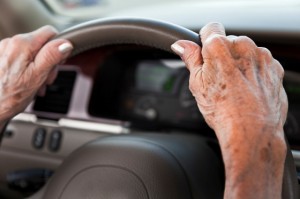Using a hand held mobile phone when you’re driving has been illegal in the UK for many years. This has been widely publicised and it would be difficult for any driver, especially one who drives as a part of their job, to admit not being aware of this law.

It’s now widely acknowledged that using a mobile phone, even with a legal hands free kit, reduces your ability to concentrate on driving and the chances of having a collision increase substantially. Despite considerable publicity associated with incidents involving serious injury or even death, why do some people continue to use mobile phones when they are driving?
Surprisingly, a large number of people admit to using their mobile phones illegally, with some surveys finding up to 60% of respondents admitting to regularly breaking the law. A recent study conducted in Australia believes that the explanation lies with the ‘Theory of Planned Behaviour’.
This theory suggests that there are three reasons why people behave in a particular way:
- their attitudes towards the behaviour
- their subjective norms and the amount that their behaviour might be influenced by others
- their perceived behavioural control or their belief in how well they can carry out the behaviour
In addition to these behavioural components, it’s also possible that the driver’s personality and the driving situation may influence whether someone will use a mobile phone when driving.
Researcher Mark Rozario and colleagues asked participants to rate how likely they were to use a mobile phone in different situations; when either driving alone or with passengers and when either being early or late to arrive somewhere.
They found that people were more likely to use a mobile phone when driving alone, regardless of whether they were running late or whether they were on time to arrive at their destination.
When the research team considered the Theory of Planned Behaviour, they found that all three components were significantly correlated with a driver’s willingness to use a mobile phone whilst driving. If a driver believes mobile phone use is not harmful, if their subjective norms are highly influenced by others and if they believe that their driving skill does not decrease when using a mobile phone, they are far more likely to use one.
Although this finding suggests that there are three different reasons why people may be willing to use a mobile phone, neither being extraverted nor being neurotic was associated with mobile phone use.
Another study recently conducted at the University of Beijing examined whether it was possible to change a driver’s attitude towards mobile phone use whilst driving. The participants in the study were asked to drive two routes in a driving simulator, one whilst having a mobile phone conversation and then one without.
Half of the participants were then provided with training to increase their awareness and understanding of how their mobile phone use influenced their driving behaviour. They viewed a video of their driving in each situation, whilst a trainer gave them feedback on their behaviours and possible risks. Participants who received the feedback training had a significant reduction in their self-reported willingness to use a mobile phone whilst driving, and this change in attitude was still apparent a month after the feedback training was given.
So it seems clear that, by providing training and by raising the driver’s awareness of the issues of mobile phone usage whilst driving, it is possible to reduce the potential for incidents and collisions to occur.
Dr Victoria Bourne (BA Hons, DPhil)
Consultant to Driving Risk Management Limited



